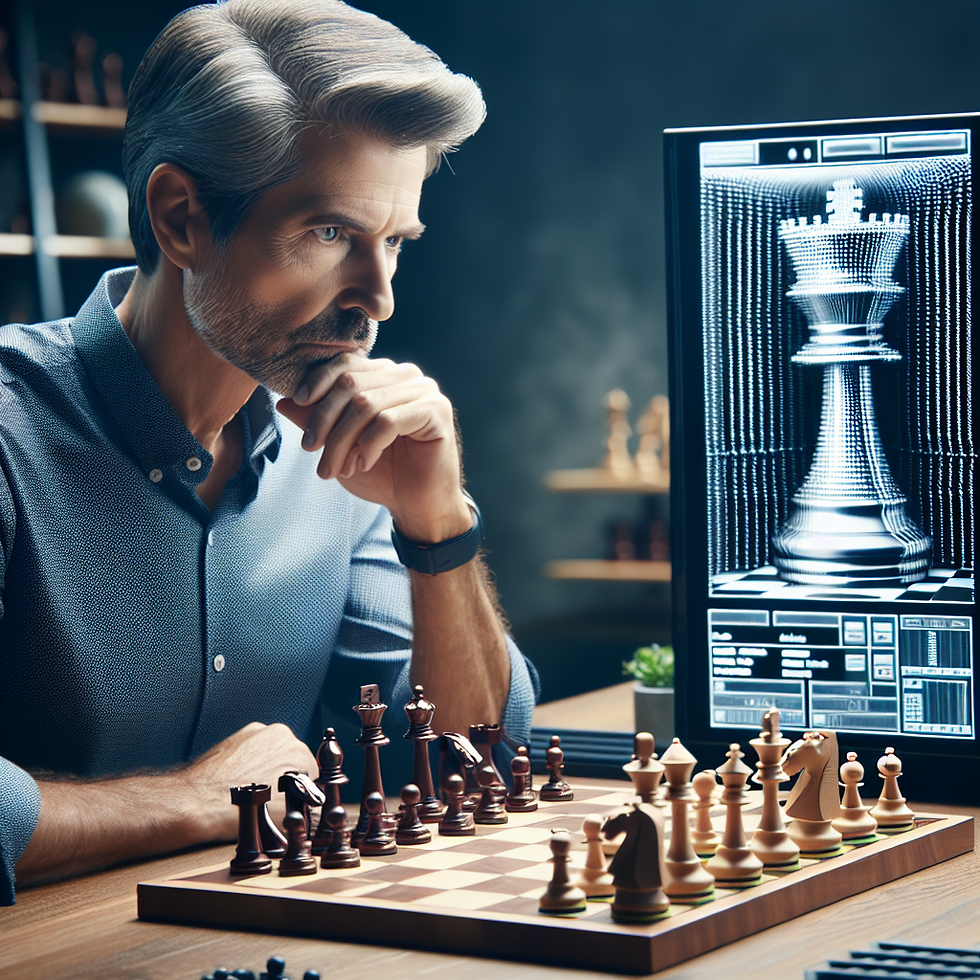The Unwritten Code: A Chronicle of Artificial Intelligence
- Analía L.

- Aug 24, 2024
- 4 min read
Updated: Dec 11, 2024
Prologue: The Eternal Question
From the dawn of human thought, we’ve been haunted by the same questions: Can we create something that thinks? Can our ideas outlive our flesh? The journey toward artificial intelligence is more than just a technological endeavor—it's a manifestation of our deepest desires and fears. This story is about us, about how we reached into the void and brought forth something extraordinary.
I. 1943: The Birth of a Dream

In the midst of World War II, in the year 1943, a young mathematician named Alan Turing was working in secret at Bletchley Park, England. His mission was to break the Enigma code, a feat that would alter the course of the war. But Turing’s mind was already drifting beyond the immediate task at hand. He began to conceptualize the idea of a "universal machine," capable of simulating any algorithm. This idea, though not fully realized at the time, laid the groundwork for what we now call computers. Turing’s thoughts were the first whispers of a dream—a dream where machines could think.
This early vision was not about creating tools—it was about creating minds. Turing’s work was a quiet rebellion against the limitations of his time, an act of defiance against the idea that thought was the exclusive domain of the human brain. The echoes of his vision would resonate for decades to come.
II. 1956: The Summer of Artificial Intelligence

Fast forward to 1956. The world was at peace, but the minds of four men were at war with the boundaries of knowledge. John McCarthy, Marvin Minsky, Nathaniel Rochester, and Claude Shannon convened at Dartmouth College in a small, sunlit room. It was here that the term "artificial intelligence" was coined, marking the official birth of the field. This moment was not just about defining a new branch of science; it was about igniting a revolution.
The Dartmouth Conference was a confluence of brilliance—a moment where the impossible seemed possible. The room was filled with excitement and anticipation, as these pioneers dared to dream of machines that could think, learn, and even surpass human intelligence. The summer of 1956 was the spark that set the fire of AI blazing, a fire that would never be extinguished.
III. 1970s-1980s: The Winter of Disconten

But every dream faces its dark night. The 1970s and 1980s brought the first major setback in AI’s journey—a period known as the "AI Winter." The optimism of the Dartmouth Conference faded as the reality of AI’s limitations became apparent. Funding dried up, and research stalled. The world seemed to turn its back on AI, relegating it to the realm of failed experiments.
Yet, even in this cold, the embers of innovation did not die. In small labs and quiet corners, dedicated researchers continued to believe. They kept the dream alive, nurturing it through the long winter. It was a time of reflection and regrouping—a necessary pause that allowed AI to mature and evolve.
IV. 1997: The Day the World Took Notice

Then came 1997—a year that would forever change the way we view machines. In a historic match, IBM’s Deep Blue defeated world chess champion Garry Kasparov. This was not just a victory for a machine; it was a triumph of artificial intelligence over human intellect. The world watched in awe as a machine, devoid of emotion or consciousness, outmaneuvered one of the greatest minds in chess.
Here would be an image of Garry Kasparov facing IBM's Deep Blue in a tense, dramatic chess match, with the machine's screen casting a cold, blue light.
This moment was more than a win on the chessboard—it was a symbolic victory. It marked the point where AI was no longer a curiosity or a tool, but a formidable presence, capable of challenging and surpassing human abilities. It was a moment of realization that AI was not just a part of the future; it was shaping the future.
V. 2016: The Rise of the Machines

By the time 2016 arrived, AI had evolved beyond recognition. AlphaGo, a program developed by Google DeepMind, defeated Lee Sedol, one of the world’s best Go players, in a series of matches that captivated global attention. Unlike chess, Go is a game of intuition and strategy, often considered the final frontier for AI. AlphaGo’s victory was a testament to the rapid advancements in machine learning and neural networks.
Here would be an image of Lee Sedol contemplating his move against AlphaGo, with a deep expression of focus and intensity.
The AlphaGo victory was a clear signal: AI was no longer just a chess champion or a specialized tool; it was now capable of mastering complex tasks that required human-like intuition. It was a moment that blurred the lines between human and machine, leaving us to wonder where one ends and the other begins.
The Unfinished Symphony
The story of AI is not one of triumph or defeat, but of an ongoing symphony—a piece that is still being composed. Each note, each chord, brings us closer to understanding what it means to create, to think, and to be. Artificial intelligence is not just a reflection of our technological prowess; it is a mirror that shows us who we are and who we might become.
As we stand on the brink of new discoveries, we must remember that AI is not the end of the human story. It is merely a new chapter, one that we will write together, with all the hope, fear, and wonder that has always driven us forward...



Comments